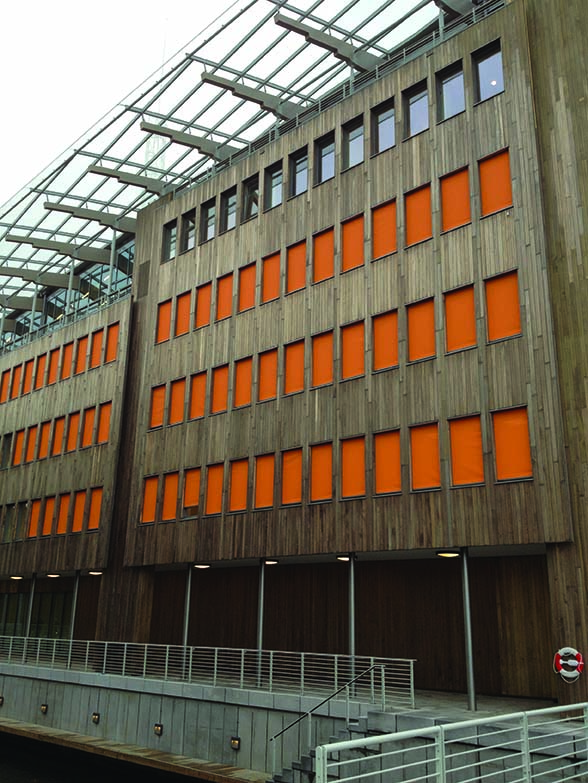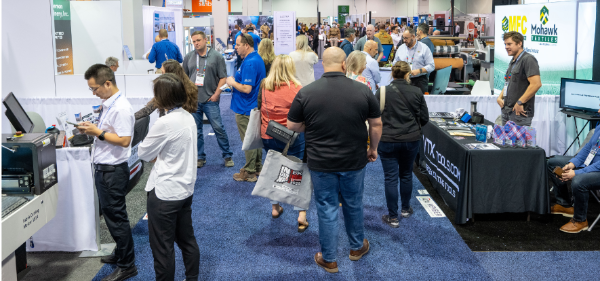By now it is standard baseline that all architects have an existential and fundamental need to begin all projects they design with the knowledge that the built environment contributes around 40% of embodied carbon to the environment. The future of the profession and indeed of the Earth must be kept first in mind when designing buildings or infrastructure.
“The UN climate roadmap outlines a 12% reduction in CO2 by 2030,” says Nic Goldsmith, FAIA, LEED AP, and founding partner of FTL Design Engineering Studio, New York City, N.Y. “Controlling embodied carbon and operational reductions are paramount for the future of architecture and its impact on our planet.” Goldsmith goes on to say that we have run out of time to replace all existing infrastructure with new, sustainable buildings. “[This] would take a hundred years, which we don’t have. Alternate approaches are required.”
Framework of sustainable strategies
There is an alphabet soup of acronyms representing strategies that designers are deploying in their approach to cracking the sustainability nut: LEED, EERE (sometimes called zero-carbon buildings, as promoted by the U.S. Department of Energy’s Office of Energy Efficiency and Renewable Energy), EC3 and so forth. Other strategies are not so concisely labeled: Green Building and the Living Building Challenge (promoted by the International Living Future Institute [ILFI].)
Most of these established strategies address some aspect of three key embodied carbon factors that impact the environment: building energy usage (largely focusing on HVAC efficiency and/or superinsulation of the building envelope); solar heat gain (focusing on Solar Heat Gain Coefficients [SHGC] through low-E fenestration assemblies and shading strategies); and self-sustaining buildings (focusing on net zero energy designs or negative energy buildings that use solar- or wind-energy collectors or combinations of both).
High-efficiency HVAC can certainly contribute greatly to winning the battle, using heat exchangers and electric heat versus gas or oil burners. So can super-insulated construction practices, such as passive house design. Some tools that help architects crunch the numbers include EC3 (Embodied Carbon in Construction Calculator), and RESFEN (a program for calculating in residential buildings the annual heating and cooling energy use and costs due to fenestration systems); and the Living Building and the well-established LEED Certification program from the Green Building Council.
This article will propose two strategies—adaptive reuse of existing buildings using fabric applications and dynamic solar shading systems—that we hope you will see the wisdom of applying first, in addition to all of those listed above.

Adaptive reuse
Over the past several decades, the American Institute of Architects (AIA) has reported on annual architecture firm billings, and a significant trend of note is the design and reuse of older buildings. The AIA national research on billings had this to say: “Retrofitting, renovating, adapting, and remodeling existing buildings now accounts for almost half of all U.S. architecture billings.” (As of December 2022.)
“One of a few strategies that are beneficial in resolving this dilemma,” says Goldsmith, “is the employment of adaptive reuse as a design approach repurposing existing infrastructure. Sustainability in design is more affected by material selection than the spatial organization of a project.”
FTL recently completed the reuse and retrofitting of an unused baseball stadium in Bridgeport, Conn. (See case study on p. 15.) “Our first sense was that the stadium was in relatively good shape, having been built in the ’90s,” says Goldsmith, “and that our goal should be to preserve as much as possible of the existing facility while augmenting it with a dramatic new enclosure.” As Goldsmith states in the case study for the Hartford HealthCare Amphitheater in Bridgeport, the payback and ROI for the local developer and city were a tenfold increase in ticket sales from the original minor league ball team that was based in the stadium facility.
“Whether using renewable mass timber or an ultralight membrane for enclosure, daylighting and acoustics,” says Goldsmith, “the materials we choose are a key element of environmental consciousness. Limiting new materials [used] by adaptively reusing as many existing ones as possible is a design challenge that allows for creative and sustainable solutions, reinterpreting our existing building stock to minimize embodied carbon and provide us with new hybrid facilities.”
This example bolsters one of the AIA’s Framework for Design Excellence key points: “Support a circular economy by reusing and improving buildings, and by designing for resiliency, adaptability, disassembly, and reuse, aspiring to a zero-waste goal for global construction activities.”

Dynamic solar shading
A recent study commissioned by the European Solar Shading Organization (ES-SO) for the EU Commission reported that “By 2050, 60 percent of the energy needed for mechanical cooling could be saved using dynamic façade shading.” The study, done by the research group The Guidehouse, established a baseline data on present and future emissions across Europe from the use of air conditioning (defined as “Business As Usual” [BAU]) and compared it to potential emissions where dynamic solar shading is properly recognized through EU regulations and implemented more widely in the construction industry (defined as “Preferred Implementation”).
“The results are quite striking,” says Anders Hall, president of ES-SO and founder of Shade Academy, in Sweden. “In the BAU scenario, 45% of buildings in Europe will require AC by 2050, compared to 28% in the ‘Preferred’ scenario … meaning no increase on today’s numbers. In terms of energy consumption, that equates to a saving of 56 terawatt-hours per year, or 58% fewer greenhouse gas emissions.”
Hall has a long history of engagement, some 30 years, with shading applications to buildings throughout Europe, and his home in Sweden. A case study from 2010, for the BD Building (a commercial office building in Gothenburg, Sweden), supports the wisdom of self-adjusting shade systems on the outside of buildings.
“During my past years in project sales, this project was the very first using a true holistic approach in regards of the early stage cooperation amongst all key players,” says Hall. “We discussed the shading solution almost one year before they even started the on-site digging. This was not only completely new to me, but also one of the most pleasant projects I ever made, due to the mutual agreement and respect that characterized the process.”
Hall states that the building had a facade that was 65% glazed, automated external blinds on all sides, and internal screen blinds for personal use and potential glare adjustment. “Combined with all other technical functions installed, the building is using approximately 40 kWh/m2 year, making the building one of the most energy efficient offices in Sweden, still today. This proves the simple fact that cooperation will take us far—rather than continue to work at the same time.”

Measuring success going forward
There is much work to be done. Any architect who wants to carry the crusade onward surely knows that we cannot do this alone. It will require focused study of all technical aspects of the building process in collaboration with all the players of the building process. ES-SO provides many resources to the building team, including new energy modeling software that can more accurately model the combination of shading and glazing called ESBO (Early Stage Building Optimization) based on the ISO 15900 standard, EN / ISO 52022/3 and spectrally measured performance data. The software is 100% free to download and use.
“These developments represent potential long-term structural changes,” says Hall, “which, in combination with the significant work being carried out across the industry on embodied carbon and energy savings, could play a key role in our response to climate change and drastically improve how we think about our buildings and their carbon footprint. It will also contribute to mitigating heat-related deaths and provide a healthier living and working indoor environment.”
The strategies outline in this article also contribute to one of the most important elements of green building: natural daylighting, something that costs nothing from an energy consumption standpoint.
As Goldsmith concludes, the reuse of existing structures augmented by fabric elements is “a recipe that can be used in many urban and suburban areas as a sustainable renewal process to invigorate old infrastructure.”
But it must be done wisely. “The only way to get this all right,” says Hall, “is proper collaboration between specifiers, engineers and product manufacturers early in the design process. In most cases, this is still not happening. Reliance is often placed on building services engineers in the unrealistic expectation that they should somehow know it all. However, there are a growing number of holistic ‘environmental design consultants,’ as well as integration and controls experts operating within the larger, multidisciplinary facade engineering practices” who can facilitate genuine early collaboration.
Architects have a key role to play in this forward-looking scenario as well. By reusing existing buildings and creatively adapting them to current use (lightweight fabric elements can provide big value at reasonable costs), or integrating dynamic shading into existing or new construction to gain huge reductions in carbon emissions, you can be well on the road to a more sustainable practice—all of the time. ϖ
Bruce N. Wright, FAIA, the former editor of Fabric Architecture, teaches architecture and construction management at Dunwoody College of Technology and is a consultant to architects and designers. He is a frequent contributor to Specialty Fabrics Review and Textile Technology Source.
Resources
Embodied Carbon in Construction Calculator (EC3)
carbonleadershipforum.org/ec3-tool/
The global building and construction materials sector is responsible for about 40% of annual GHG [greenhouse gas] emissions, with construction materials alone accounting for 10%.
Early Stage Building Optimization (ESBO)
es-so.com/tools/esbo
European Solar Shading Organization (ES-SO)
es-so.com
A nonprofit organization to Belgian Law, the umbrella organization of the professional solar shading associations that are part of the Member States of the EU.
RESFEN
windows.lbl.gov/software
A program for calculating annual heating and cooling energy use and costs in residential buildings, focusing on fenestration systems.
Shade Academy
shadeacademy.com
A comprehensive library of resources and training focused on adaptive daylight management.
SIDEBAR: LEED counts for shade
Fabric shade systems can contribute to a LEED calculation for energy efficiency, materials, quality of environment and other areas of the LEED system. Total points can range from 1 to 18, depending on category and stacking categories.
CATEGORIES
ENERGY & ATMOSPHERE
• Required shading devices can optimize energy usage and reduce heat gain and heat island effects.
Keep in mind:
Interior shading combined with low-e glass fenestration can produce 13 percent reduction in heat gain. This assumes SHGC is E Screen 3 percent Charcoal/ Charcoal colors. Different fabrics will have different effects on SHGC percent improvement.
Exterior shading, with standard double pane windows can produce up to 84 percent reduction in heat gain. The key is to stop the sun from hitting the glass or heat will conduct into the interior and then dissipate to inside air, loosing the maximum advantage of a shading system. Maximum efficiency requires fully integrated and automated shading devices that respond actively to changing atmospheric conditions.
MATERIALS & RESOURCES
• Fabric shading materials can count toward Materials & Resource calculations because many fabrics are produced in sustainable ways, and/or made from recycled materials.
• When going for LEED certification, shade fabrics can be submitted for HPD disclosure.*
INTERIOR ENVIRONMENTAL QUALITY
• Thermal comfort can be improved with exterior shading devices and lend individual control of interior spaces.
• Glare reduction can be realized from shading (both interior and exterior) and daylighting control for optimized exterior views.
* The HPD Open Standard is a standard specification—composed of a format and instructions—for the accurate, reliable and consistent reporting of product contents and associated health information, for products used in the built environment. —Health Product Declaration® (HPD) Collaborative
Source for this topic: Draper • draperinc.com
SIDEBAR: Dynamic external shade systems
For solar shading systems to control the access of solar heat gains under variable conditions, they have to be mobile, or retractable—most often moving up and down, sometimes sideways. Internal blinds and curtains do that too, but external systems are more efficient. This is pure logic, as they arrest the sun before it hits the glass.
An external, adjustable device can be manipulated to exclude or admit sunlight when required and is particularly effective in dealing with low-angle direct sunlight, diffuse and reflected light.
These systems can be designed and automated to combine both the merits of adequate shading in summer and the free, renewable solar energy in winter.







Leave A Comment